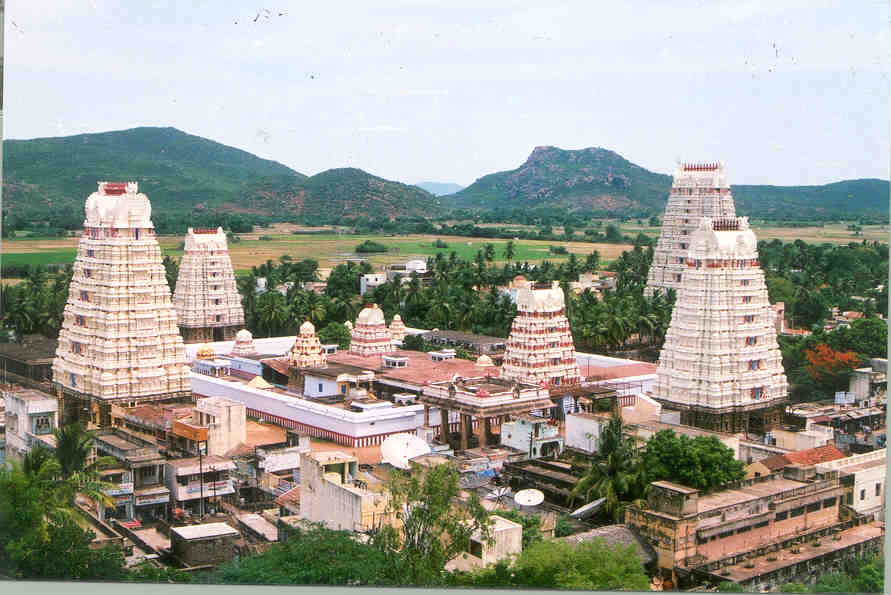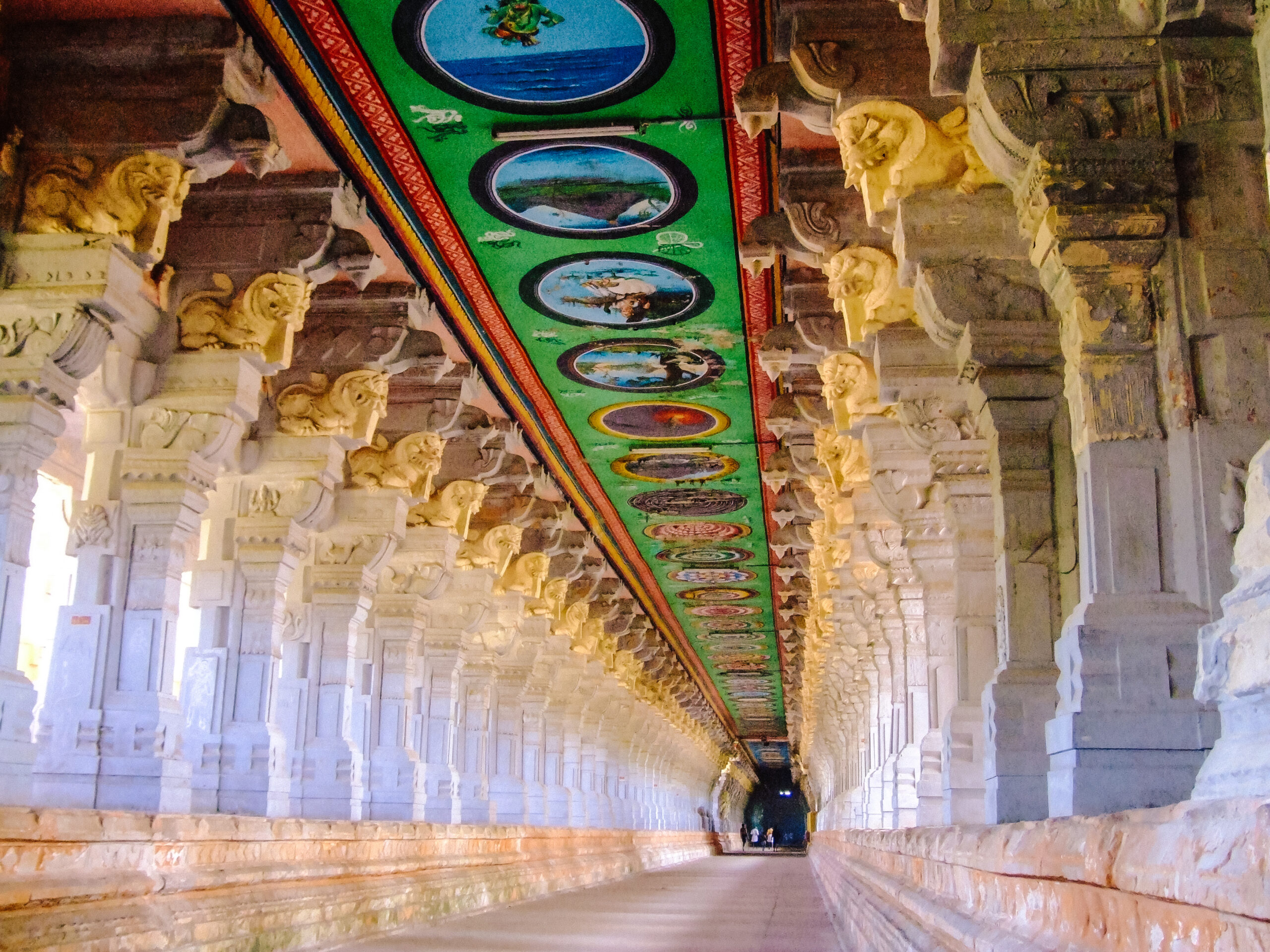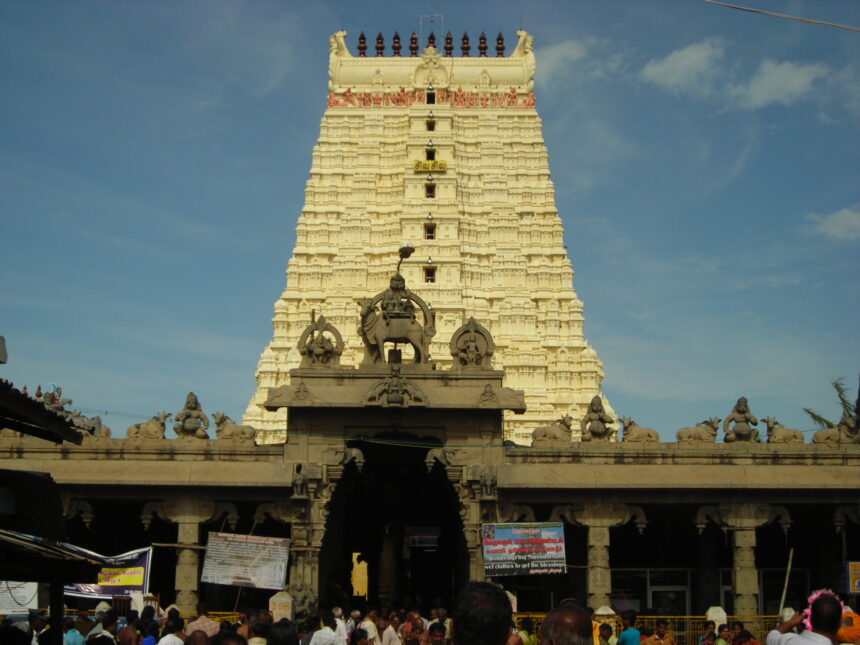Rameswaram Temple: A Vital Jewel in the Char Dham Pilgrimage
Pilgrimage to Rameswaram Temple
Embarking on the Char Dham Yatra is one of the most revered spiritual quests in Hinduism, linking four cardinal points of India—Badrinath in the north, Dwarka in the west, Puri in the east, and Rameswaram Temple in the south. This pilgrimage is not just a journey through the geographical expanse of the subcontinent but a passage through the spiritual heritage of one of the world’s oldest religions. Each site in the Yatra holds a unique significance, weaving a tapestry of texts and divine narratives that resonate deeply with the devout. Having explored the spiritual and cultural aspects of Badrinath, Dwarka, and Puri in previous entries, this blog focuses on Rameshwaram Temple, the Southern Dham, completing our series on the Char Dham pilgrimage.
Rameswaram, located on a tranquil island off the Tamil Nadu coast, is known as the Southern Dham. Revered as a bridge between India’s southern tip and the mystical stories of the Ramayana, Rameswaram offers pilgrims a unique blend of sanctity and scenic beauty. It is a place where the vibrations of epic tales are felt amidst the serene backdrop of oceanic horizons.
Historical and Religious Significance
The spiritual legacy of Rameswaram is deeply rooted in the events of the Ramayana, one of Hinduism’s great epics. According to the ancient text, it is here that Lord Rama, along with his devoted followers, constructed a bridge of floating stones to the island of Lanka to rescue his wife Sita from the demon king Ravana. This monumental task is not just a tale of heroism and devotion but also signifies Rama’s penance and the pursuit of dharma (cosmic law and order).
The sacred center of Rameswaram is the majestic Ramanathaswamy Temple, which stands as a testament to this history. The temple is believed to house the lingam that Rama worshipped to absolve himself of the sin of killing Ravana, a Brahmin by birth. This lingam, brought by Hanuman from the Himalayas, and the lingam made by Sita from the sand, are venerated even today, marking the temple’s consecration and continual religious importance.
Historically, the temple’s grand construction is attributed to several expansions by various rulers over the centuries. The setup that visitors see today largely dates back to the 12th century, under the patronage of the Pandya Dynasty, who were instrumental in commissioning the large sculpted pillars and the temple’s expansive corridors. Subsequent contributions by the rulers of the Vijayanagara Empire in the 16th century further enhanced the temple’s structure, adding intricate hallways and massive gopurams (gateway towers). These additions have not only beautified the Ramanathaswamy Temple but also fortified its status as a vital center of worship and pilgrimage in the Southern part of India.
Architectural Splendor of Rameswaram Temple

A unique architectural feature of the temple is its ornate gopurams, elaborately decorated with stucco figures of gods, goddesses, demons, and Hindu texts creatures. These towering structures serve as the threshold between the mundane and the divine, symbolically marking the transition of pilgrims from the earthly realm into a space of spiritual sanctity. The temple’s layout and design principles reflect a deep understanding of both artistry and spirituality, ensuring that every aspect from the alignment of the sanctum to the positioning of the subsidiary shrines enhances the site’s sacred ambiance.

Moreover, the temple’s design exhibits an advanced understanding of geometry and astronomical alignment, adding layers of meaning and purpose to its construction that transcend mere aesthetics. This alignment with celestial events underscores the temple’s profound spiritual significance.
Additionally, Rameswaram’s inclusion in the ‘Pancha Rathna Yatra’—a pilgrimage circuit that connects five sacred temples—highlights its importance in Hindu religious practices beyond the Char Dham. Each section of the temple, from its expansive courtyards to the vibrant frescoes on its walls, contributes to the overall aesthetic and spiritual experience, making Rameswaram not just a place of worship but a beacon of cultural heritage and architectural marvel in Hindu tradition.
The Spiritual Journey at Rameswaram Temple
The pilgrimage to Rameswaram temple is a profound spiritual odyssey steeped in centuries-old rituals that offer a profound pathway to purification and renewal. A pivotal ritual that every pilgrim partakes in is the sacred bath in the Agni Theertham, the ocean waters lapping against the temple’s shores. This ancient practice, believed to cleanse sins and purify the soul, sets the stage for a deep spiritual cleansing. Pilgrims immerse themselves at dawn, when the early light bathes the sea in gold, or at dusk, as the sun sets in a blaze of colors, lending a mystical atmosphere to the ritual bathing.
Following this purifying bath, pilgrims engage in Sandhya Vandhanam, a meditative prayer that resonates with the sound of the crashing waves, and Samudra Arathi, an offering to the sacred sea. These rituals not only enhance the spiritual ambiance but also connect the pilgrims to the rhythmic life force of nature, deepening their sense of unity with the divine.
Within the sanctum of the ancient Ramanathaswamy Temple, the journey continues through its long, ornately carved corridors leading to twenty-two sacred wells. Each well is imbued with water believed to have unique healing and purifying properties. The act of bathing in these theerthams is not merely ritualistic but a transformative experience, believed to cleanse both the body and the spirit. Pilgrims often describe this part of the journey as walking through different states of consciousness, with each well offering a step closer to spiritual clarity and enlightenment.
This series of rituals at Rameswaram temple is unique not just for its profound spiritual significance but also for how it integrates natural elements with devotional practices. To enhance the visitor experience, personal stories of transformation and renewal from past pilgrims are displayed along the temple corridors, sharing tales of faith, healing, and miracles. These testimonies bring to life the profound impact of the pilgrimage, making the spiritual journey at Rameswaram temple a deeply personal and collective experience.
By linking these practices to the natural beauty of the surroundings and the historic significance of the rituals, this section of the journey not only underscores Rameswaram’s unique spiritual ambiance but also illustrates its continuing relevance in the modern spiritual landscape, inviting pilgrims to partake in a tradition that has nurtured countless souls through the ages.
Cultural and Artistic Heritage
Rameswaram’s Ramanathaswamy Temple serves not only as a spiritual center but also as a repository of rich cultural and artistic traditions. The walls of the temple showcase exquisite bas-relief sculptures, which breathe life into the legends of Hindu epics, particularly the Ramayana. These artworks not only enhance the temple’s spiritual atmosphere but also serve as important historical documents, preserving the artistic traditions passed down through generations.
The cultural heritage of Rameswaram temple is celebrated vibrantly through its many festivals and events, which are deeply intertwined with the temple’s annual religious calendar. The most notable is Mahashivaratri, which draws devotees nationwide who participate in night-long prayers, symbolizing the triumph of light over darkness. Similarly, the festival of Rama Navami, marking Lord Rama’s birth, transforms the town with elaborate processions and performances of the Ramayana, reinforcing the bond between the divine narratives and the temple’s community.
These festivals are complemented by the temple’s use of music, dance, and art during these celebrations, creating a dynamic cultural expression that engages both the young and the old. The integration of traditional and religious arts during these festivals not only enriches the worship experience but also helps in passing down cultural values to subsequent generations, ensuring that the spiritual and cultural fabric of Rameswaram Temple remains vibrant and intact.
By focusing on these elements, the temple’s role extends beyond a place of worship, cementing its status as a cornerstone of cultural heritage and a beacon of continuous artistic tradition within the Hindu community.
Community and Environmental Impact
The Ramanathaswamy Temple plays a pivotal role in the local economy of Rameswaram. As a major pilgrimage destination, it attracts thousands of visitors annually, significantly boosting local businesses such as hospitality, food services, and the sale of religious paraphernalia. This influx of pilgrims is a primary source of income for many residents, thereby intertwining the temple’s economic impact with the community’s livelihood.
Environmental conservation in Rameswaram is critical, given its unique ecosystem and the challenges posed by mass tourism. Efforts to maintain the sanctity and cleanliness of the Agni Theertham and the surrounding areas are evident. Local authorities, in collaboration with environmental groups, have implemented measures such as waste management systems and water treatment facilities to mitigate the impact of pollution. Educational campaigns aimed at both residents and visitors promote sustainable practices that help preserve the natural and spiritual purity of this sacred island.
Together, these sections not only highlight the spiritual essence of Rameswaram but also underscore its cultural richness and communal significance, painting a comprehensive picture of its enduring legacy and contemporary relevance.
Pilgrims’ Experiences
Pilgrims who journey to Rameswaram temple often share powerful accounts of spiritual renewal and transformation. Many describe their visit as a deeply moving experience, marked by moments of profound peace and introspection. For example, a pilgrim from Gujarat recounts the overwhelming sense of connection felt during the ritual bath in the Agni Theertham, describing it as “a literal and metaphorical cleansing that refreshed the soul and the mind.” Another common testimony comes from those who have walked the temple’s sacred corridors, where they report experiencing a unique stillness that pervades the senses, often leading to personal revelations and a renewed spiritual resolve.
The act of performing rituals in the ancient setting of Rameswaram temple allows many to touch a part of their faith that modern life tends to obscure. These personal stories often highlight a rediscovery of religious heritage, a bonding with family or community, or even the discovery of a new direction in life after visiting this sacred site.
Visiting Rameswaram Temple
For those planning to visit Rameswaram, it is advisable to time your journey around the cooler months from October to March, when the climate is more favorable for exploring. Visitors should prepare for a range of activities that require both physical and spiritual engagement, such as early morning baths in the sea, walking long distances within the temple, and participating in rituals.
Beyond the Ramanathaswamy Temple, Rameswaram offers several places of interest that enrich the pilgrimage experience:
- Dhanushkodi, the point from where Lord Rama is believed to have built the bridge to Lanka. Today, it stands as a hauntingly beautiful ghost town with ruins washed by the waves.
- The Five-faced Hanuman Temple, which houses the floating stone used to build Rama’s bridge and contains murals depicting the Ramayana.
- Kothandaramaswamy Temple, situated at the southern tip of the island, where the Vibhishana, brother of Ravana, is believed to have been crowned by Rama.
Reflections on Spiritual Journey to Rameswaram Temple
Rameswaram’s integral role in the Char Dham Yatra underscores its spiritual significance and the profound impact it has on those who visit. As the Southern Dham, it not only offers a unique blend of natural beauty and sacred tradition but also serves as a pivotal point of devotion, penance, and salvation in Hindu spirituality. The temple’s majestic architecture, combined with the ancient rituals that take place within its walls, continues to draw seekers from around the world, searching for peace and spiritual fulfillment.
We invite you to delve deeper into the mystical tales and spiritual narratives that Rameswaram has to offer. Engage with our blog or follow us on social media to discover more about this sacred pilgrimage site and other spiritual journeys.
Call to Action
Embark on a journey to Rameswaram and experience the transformative power of one of Hinduism’s holiest sites. Whether you are a devout pilgrim or a curious traveler, Rameswaram has something to offer everyone. Share your experiences with us, contribute to our growing community of spiritual explorers, and find inspiration in the stories of others who have walked this sacred path. Visit, learn, and discover the rich spiritual heritage that Rameswaram embodies. Join the conversation and become a part of our journey through India’s divine landscapes.
Feature Image: Click here to view the image. [Credit https://flickr.com]
Glossary of Terms
- Char Dham Yatra: A pilgrimage to the four holiest sites in Hinduism located at four cardinal points of India—Badrinath, Dwarka, Puri, and Rameswaram. It is considered one of the most sacred pilgrimages in Hinduism.
- Dravidian Architecture: An architectural style originating in South India, characterized by solid, massive structures, large gopurams (temple towers), intricate sculptures, and expansive pillared halls.
- Gopuram: A monumental tower at the entrance of any temple in South India, part of Dravidian temple architecture, usually ornately decorated with sculpted figures of deities, mythical animals, and floral patterns.
- Rameswaram: An island in the state of Tamil Nadu, India, known for the Ramanathaswamy Temple and its sacred significance in Hindu mythology, particularly in the epic, Ramayana.
- Ramanathaswamy Temple: A major Hindu temple dedicated to Lord Shiva, located on Rameswaram island. It is revered for its architectural magnificence and its series of corridors lined with sculpted pillars.
- Ramayana: An ancient Indian epic narrating the life of Prince Rama, his wife Sita, and his loyal companion Hanuman, focusing on themes of duty, righteousness, and devotion.
- Lingam: A symbolic representation of the Hindu deity Shiva, used as a sign of worship in temples.
- Theertham: Sacred water bodies or wells within a temple’s complex, believed to have divine properties that can purify devotees physically and spiritually.
- Mahashivaratri: A major Hindu festival celebrating Lord Shiva, marked by fasting, chanting, and night-long prayers.
- Pancha Rathna Yatra: A pilgrimage circuit that includes five sacred temples, emphasizing a comprehensive spiritual journey within Hindu practice.
- Dhanushkodi: A ghost town near Rameswaram, known for its mythological significance as the starting point where Rama is believed to have built a bridge to Lanka.
- Samudra Arathi: A ritual offering to the sea, involving prayers and the waving of lamps, performed as a mark of respect and devotion.
Tags: #RameswaramTemple #CharDhamYatra #HinduPilgrimage #DravidianArchitecture #IndianTemples



Leave a Reply